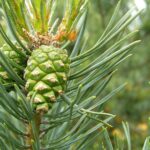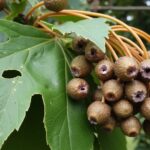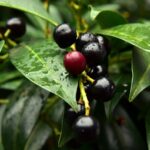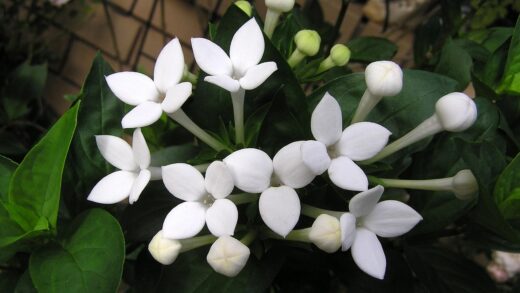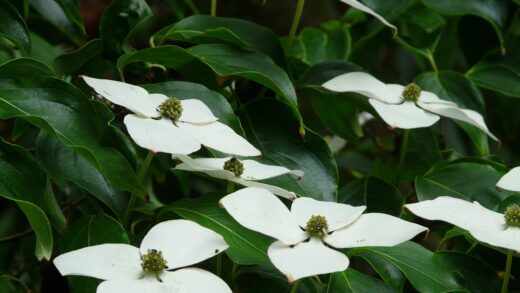Understanding the water requirements of the Scots pine is a study in balance, guided by the species’ remarkable adaptation to a wide range of environments, many of which are characterized by dry, sandy soils. For the cultivator, this means recognizing the distinct difference in irrigation needs between a newly planted sapling and a mature, established tree. While young pines require consistent moisture to develop a robust root system, mature specimens are exceptionally drought-tolerant and are far more likely to suffer from the consequences of overwatering than from a lack of it. Mastering the art of irrigation for this species involves careful observation of the tree and soil conditions, and a departure from rigid, calendar-based watering schedules. This approach ensures the tree remains resilient, healthy, and free from the root diseases that plague overly irrigated conifers.
The key to the Scots pine’s drought tolerance lies in its extensive root system, which features a deep taproot capable of accessing moisture far below the surface, complemented by a wide network of lateral roots. This architecture makes it highly efficient at sourcing water even in arid conditions. In a landscape setting, this means that once the tree has had a few years to fully establish this root system, it can typically sustain itself on natural rainfall alone in most temperate climates. The challenge for the gardener is to provide the necessary support during the crucial establishment phase without fostering a dependency on supplemental water that can lead to a shallow, less resilient root structure.
Irrigation practices must also be adapted to the changing seasons and prevailing weather conditions. The water needs of a Scots pine are highest during the active growing season in spring and during hot, dry periods in the summer. Conversely, as the tree enters dormancy in the autumn and winter, its water uptake slows dramatically. Watering during these dormant periods is generally unnecessary and can be harmful, as saturated, cold soil can damage the roots. Therefore, a responsive watering strategy, one that provides water only when the tree truly needs it, is far superior to a proactive but potentially excessive one.
Ultimately, the goal of any irrigation plan for Scots pine should be to promote self-sufficiency and long-term health. This is achieved by watering deeply and infrequently, a practice that encourages deep root growth and maximizes the tree’s innate drought resistance. By learning to recognize the subtle signs of water stress and understanding the feel of the soil, you can provide water precisely when it is most beneficial. This thoughtful approach to irrigation not only conserves water but also cultivates a stronger, healthier tree that is better equipped to withstand the unpredictable challenges of its environment.
Understanding the drought tolerance of Scots pine
The exceptional drought tolerance of the Scots pine is not an accident but a product of millennia of evolution in often harsh and unforgiving environments. The species has developed several key physiological and morphological adaptations that allow it to conserve water and survive prolonged dry periods. One of the most significant is its needle structure. The needles are covered with a thick, waxy cuticle that reduces water loss through transpiration, and their stomata—the small pores that regulate gas exchange—are sunken into pits, which helps to trap a layer of humid air and further limit moisture evaporation.
The root system is the other critical component of its drought resistance strategy. From a young age, the Scots pine begins to develop a prominent taproot that can grow several meters deep, allowing it to access moisture from soil layers that are unavailable to more shallowly rooted plants. This is complemented by an extensive network of fine lateral roots that are highly efficient at absorbing any available surface moisture. This dual-system approach provides the tree with stability and a reliable water source even when the topsoil is completely dry, making it a true survivor in sandy or rocky landscapes.
Furthermore, the Scots pine can regulate its physiological processes in response to water stress. When moisture becomes scarce, the tree can close its stomata more tightly to drastically reduce water loss, although this also reduces photosynthesis. It can also adjust the osmotic potential of its cells, allowing it to draw water from drier soil more effectively. These internal mechanisms mean the tree can endure periods of drought that would be fatal to many other tree species. This inherent resilience is why it is often used in reclamation projects and for planting on dry, exposed sites where other trees would fail.
For the gardener, this deep-seated drought tolerance means that a “less is more” approach is often best for established trees. The species has evolved to thrive with infrequent rainfall, and providing a constant supply of water through regular irrigation can disrupt its natural cycles. This can lead to the development of a lazy, shallow root system that is less resilient during unexpected, severe droughts. Trusting in the tree’s natural abilities and providing supplemental water only in the most extreme and prolonged dry spells is the most effective way to care for a mature Scots pine.
Watering newly planted trees
The period immediately following planting is the most vulnerable time in a Scots pine’s life, and its water needs are at their highest. During this establishment phase, which typically lasts for the first two to three growing seasons, the tree’s root system is still confined to the original root ball and the immediately surrounding soil. It has not yet developed the deep and extensive network required to be self-sufficient. Therefore, it is entirely dependent on the gardener to provide consistent and adequate moisture to fuel its growth and encourage root expansion into the native soil.
The goal of watering a newly planted pine is to keep the root ball and the surrounding soil consistently moist, but not waterlogged. A common and effective schedule is to provide a deep soaking once or twice per week, depending on rainfall and temperature. It is far better to water deeply and less frequently than to provide a light sprinkling every day. Deep watering encourages the roots to grow downwards in search of moisture, which is essential for developing a strong, drought-tolerant root system for the future. A light watering only moistens the surface, promoting shallow root growth that will make the tree less resilient in the long run.
The best method for watering a new tree is to apply the water slowly directly over the root ball. Using a soaker hose coiled around the base of the tree or a garden hose set to a slow trickle is ideal. This allows the water to be absorbed gradually into the soil with minimal runoff. You should apply enough water to thoroughly saturate the entire root zone. A good rule of thumb is to provide approximately 40 liters of water for every 2 to 3 centimeters of trunk diameter at each watering. This ensures the moisture penetrates deeply and is available where the roots need it most.
It is also crucial to monitor the soil moisture directly rather than relying solely on a calendar. Before watering, check the soil by digging down 10 to 15 centimeters near the edge of the root ball. If the soil feels moist at that depth, you can delay watering. If it is dry, it is time to provide a thorough soaking. You must continue this diligent watering practice throughout the first full growing season and into the second, gradually reducing the frequency as the tree shows signs of successful establishment, such as vigorous new growth and good needle color.
Irrigation needs for established pines
Once a Scots pine is considered established, typically after two to three years in the ground, its irrigation needs change dramatically. A well-established tree will have extended its root system deep and wide into the surrounding soil, making it highly efficient at finding its own water. In most temperate climates, a mature Scots pine will require no supplemental irrigation at all, thriving entirely on natural rainfall. This transition from a dependent sapling to a self-sufficient tree is a key milestone, and continuing to water it on a regular schedule beyond this point is not only unnecessary but can be detrimental.
The most common problem affecting mature, landscape Scots pines is overwatering. Excessive irrigation or planting in poorly drained soil leads to a condition known as root rot, where the soil becomes so saturated with water that it deprives the roots of oxygen. This anaerobic environment is ideal for water-mold fungi, such as Phytophthora, which attack and kill the roots. The symptoms of overwatering can paradoxically mimic those of drought stress—yellowing or browning needles, branch dieback, and a general lack of vigor—leading well-intentioned gardeners to water even more, thus exacerbating the problem.
Supplemental watering for an established Scots pine should be reserved only for periods of extreme and prolonged drought. This might be defined as a period of many weeks or even months with no significant rainfall, combined with high temperatures. In such severe conditions, the tree may begin to show signs of stress, such as a dulling of needle color or a slight drooping of new growth. Even then, irrigation should be done infrequently, perhaps only once or twice during the entire dry spell. A single, very deep soaking is far more beneficial than repeated, lighter applications.
When irrigating a mature tree during a severe drought, it is important to apply water over the entire root zone. The roots of a mature tree extend well beyond the spread of its branches, often two to three times the width of the canopy. Therefore, you should apply water slowly over this entire area to ensure all parts of the root system have access to the moisture. Using a soaker hose or a sprinkler set on a low setting and moved periodically is an effective way to deliver a deep and thorough watering. The goal is to recharge the soil’s moisture profile, not to create a permanently damp environment.
Signs of overwatering and underwatering
Learning to distinguish between the signs of overwatering and underwatering is a crucial skill for any Scots pine caretaker, as the visible symptoms can be deceptively similar. In the case of underwatering, which is most likely to occur in newly planted trees or during exceptional droughts, the needles may begin to look dull, taking on a grayish or dusty appearance instead of their normal vibrant blue-green. The new growth at the tips of the branches, the “candles,” may wilt or droop. In advanced stages of drought stress, the tips of the needles will begin to turn brown, a condition known as “scorch,” and older needles may be shed prematurely.
The most reliable way to confirm underwatering is to physically check the soil. Dig down 15 to 20 centimeters into the root zone, away from the trunk. If the soil at this depth is dry and crumbly, the tree is likely in need of water. For a recently planted tree, it is especially important to check the moisture level of the original root ball, as it can sometimes dry out faster than the surrounding native soil. A positive response to a deep watering, with the tree’s appearance improving over the next few days, is also a clear indicator that a lack of water was the issue.
Conversely, the symptoms of overwatering are often more insidious and develop over a longer period. A chronically overwatered Scots pine will also exhibit yellowing or browning needles and branch dieback. However, this is not due to a lack of water, but rather to a lack of oxygen in the saturated soil, which leads to root decay. The damaged roots are unable to absorb water and nutrients, so the tree effectively begins to starve and dehydrate, even though it is sitting in water. The needles may feel limp and the soil around the base of the tree will be consistently damp or even marshy.
To diagnose overwatering, the soil check is again the definitive test. If the soil is consistently wet, soggy, or has a sour smell, overwatering is the likely culprit. You might also notice a lack of new growth or very short, stunted candles in the spring. In severe cases of root rot caused by overwatering, the entire tree can decline and die quite rapidly. The only remedy is to immediately cease all supplemental irrigation and, if possible, improve the drainage around the tree. Unfortunately, if the root damage is extensive, the tree may not be recoverable.
📷 Arnstein Rønning, CC BY 3.0, via Wikimedia Commons


